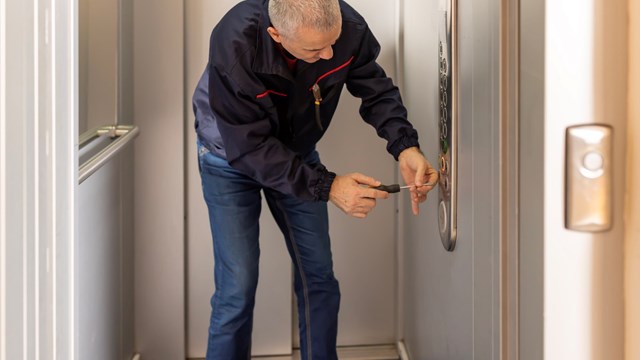Of all the finishes inside our homes, flooring has the greatest long term impact on indoor air quality, and perhaps on the environment as a whole. Flooring finishes often contain harmful chemicals—whether in the flooring itself or in the products usedto install it. It harbors the majority of the dirt, moisture, and other contaminants that are commonly found in the home. There are many options and, just as with all green products, there is no “one size fits all” for flooring choices. Here are some basic considerations that can help to get you started in evaluating flooring for your home.
The first step is to choose a flooring material that matches the durability required for the space. For instance, bathrooms and kitchens have a very different set of performance criteria than that of corridorsand bedrooms.
There is a great variety of “green” flooring materials to choose from. It’s important to consider all the factors that have an environmental impact.
Some key environmental factors include:
• Recycled content
• Recyclability
• Source of materials (is it made from rapidly renewable materials?)
• Local or regional manufacture
• Low- or zero-VOC (volatile organic compound) and non-toxic
• Non-vinyl (avoid PVC)
Green Options
The following is a helpful list of green options for flooring:
Green Carpet contains natural animal fibers (e.g., wool), plant fibers (e.g., jute, sisal, sea grass, coir), recycled natural fibers (e.g., cotton), or synthetic fibers made from recycled plastic (PET). Unfortunately, carpet is absorbent, and retains moisture, dirt, mold, and dust mites which can affect occupants with asthma and allergies. Arearugs and carpet tiles are preferable to wall-to-wall carpeting because they are easier to maintain. Be sure to look for products with non-PVC backing.
Bamboo is a rapidly-renewable flooring material of exceptional durability and has 50% less contraction and expansion than wood products. A drawback is that the majority of bamboo comes from China, and transporting it requires a huge amount of energy. Look for formaldehyde-free adhesives, and check with a professional about using proper sealers when installingbamboo in areas exposed to moisture.
Corkis another rapidly-renewable material that is durable, sound- and moisture-absorbent, rot- and mold-resistant, fire retardant, hypoallergenic, and insect resistant. However, like bamboo, cork requires a great deal of energy to transport. Use factory-finished products, or seal with a low-toxic, low-VOC or plant-based wax sealer especially in areas of moisture, and avoid urea-formaldehyde binders and PVC laminate.
Concrete flooring is popular in residential applications because it is durable, easy to clean, and produced from an abundant resource. When left exposed, it can function as both the foundation slab and the finished floor. It is a great material for radiant, in-floor heating systems as it can absorb, store, and release heat. Most components of concrete can be sourced locally with the exception of Portland cement. Fly ash, a byproduct of burning coal, can replace a portion of the cement in a concrete mix, reducing the environmental impact of this energy-intensive product. Be sure to select natural, nontoxic pigments instead of surface stains, and use water-based, low-toxic sealants.
Linoleum is a green flooring material composed of renewable materials and abundant non-renewables—linseed oil, wood flour, pine resin, cork, mineral fillers, and pigments—with a plant fiber backing. It is extremely durable, lasting between 30 and 40 years. Linoleum is minimally processed, biodegradable, easy to maintain, stain-resistant, naturally anti-static and anti-microbial, and non-toxic. Look for “natural linoleum,” as vinyl flooring is sometimes called “linoleum.” Linoleum doesn’t always have a high-end aesthetic, and the sheets can be difficult to install.
Terrazzo is an aggregate of recycled, post-consumer glass or stone (such as marble, granite, or quartz) chips in a cement- or resin-based matrix. It is very durable, resistant to stains and burning, and is easy to clean. It can, however, be expensive and requires a lot of energy to produce. Look for products made with binders that will not off-gas.
Ceramic tile contains recycled content and can be recycled. Ceramic tile is durable, waterproof, low-toxic, heat-resistant, and is easy to clean. It can be fragile, however, and it requires a great deal of energy to manufacture. Look for regionally-manufactured tiles with dense recycled content for durability and moisture protection. Use lead-free glazed tiles as they withstand heavy wear and tear, and look for low-VOCtile-setting adhesives.
Stone is a naturally-occurring abundant resource that is durable, easy to clean, andreusable. Stone, however, is not a renewable resource, and the quarrying process can be ecologically damaging. Look for regionally-mined and fabricated stone and ecologically-responsible quarrying processes. Where sealants and treatments are necessary, use non-toxic water-based products.
Salvaged/reclaimed or sustainably harvested wood is a great alternative to standard wood products. Local wood supports the local economy and does not require a great deal of energy to transport. FSC-certified wood is sustainably harvested in order to maintain forests’ integrity. Reclaimed wood redirects materials from landfills and reduces pressure on virgin wood. Wood in general isn’t as durable or insect-resistant as other flooring options. Finish wood with a water-based or plant-based (e.g., products with linseed oil, beeswax, etc.) product and use low-VOC paints.
Composite wood and plastic flooring is a product that offers a recycled wood fiber combined with recycled plastic resin. This product is durable, lightweight, strong, and does not contain preservatives or chemical additives. This flooring also does not require sealants and looks similar to regular wood. Wood fiber content makes it stronger than plastic lumber. Some potential drawbacks are that the color might fade over time, and it cannot be recycled.
Whatever your considerations for flooring, choose the product that best meets your needs and has a limited impact on the environment.







Leave a Comment